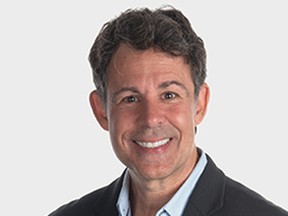Warning labels are a start, but it will take a concerted effort, including government regulation and raising awareness, says Dr. Gary Goldfield

Article content
When U.S. Surgeon General Dr. Vivek Murthy warned that social media presents a “profound risk of harms” for kids, he cited research by CHEO’s Dr. Gary Goldfield as part of the growing body of evidence about the dangers of social media to children and adolescents.
Earlier this month, Murthy asked the U.S. Congress to require warning labels for social media, like cigarettes, because of those harms. He later wrote that the mental health crisis among young people is an emergency “and social media has emerged as an important contributor.”
Advertisement 2
Story continues below
Article content
Goldfield, a psychologist who is a senior scientist at the CHEO Research Institute with the Healthy Active Living and Obesity Research Group, is among researchers whose work is raising concern worldwide about the impact of social media and screen use on children and youth.
Among other things, research has shown that higher social media use increases the risk of poorer mental health and social connections.
Goldfield says it’s time for a concerted effort to reduce the negative impact of social media on children and youth — although he doesn’t think warning labels alone would have a significant impact.
“I think a multi-pronged strategy is needed. I don’t think warning labels will be very effective. But it is a good start. It creates some awareness that might cue parents to maybe start monitoring their children’s media use on their own.”
But Goldfield said parents can’t be left on their own to try to regulate their children’s social media use and doing so must be a concerted effort that includes government regulation, raising awareness about potential harms and encouraging reduction of screen time. Moves to ban cellphone use in schools are also a step in the right direction, as is the recently introduced federal online harms act, which allows for stricter regulation of social media, he said.
Advertisement 3
Story continues below
Article content
Goldfield would like to see social media blocked at school or at least cellphones removed from students during the day. Research has found that the mere presence of a cellphone in a student’s pocket is enough to distract them, whether they are using it or not. Cellphones, he said, are undermining learning.

“Why are we constructing an environment we know is unhealthy? Why not have a safe-haven for five or six hours where kids don’t have these distractions?”
In recent months, individual school boards, including the Ottawa Carleton District School Board, have filed lawsuits against social-media giants, claiming their products have harmed children and schools.
In recent years, Goldfield has been involved in research that shows numerous links between social media use and poorer mental health as well as social and developmental outcomes. His research has shown links between higher social media use and higher risk of anxiety, depression, body dissatisfaction, disordered eating, poorer peer attachments and attachments to parents.
And it is addictive, he said. Even the anticipation of a social media message releases dopamine.
Advertisement 4
Story continues below
Article content
“You have got this convergence of easy access and an intentionally addictive product designed to attract users’ attention and hold it,” which capitalizes on a strong drive to connect which is inherent in adolescents.
But research done by Goldfield and his team has also demonstrated that reducing social media use has real benefits. A recent study showed that reducing social media use from three hours to one hour a day improved mental health, anxiety, depression and loneliness in adolescents and young adults. Study subjects also slept 45 minutes more a day, on average. For Goldfield, one of its most surprising findings was that participants experienced less FOMO – or fear of missing out — when they cut back on their social media use.
Research could inform how parents approach their own and their children’s social media use, said Goldfield. He suggested families work together to reduce their time on social media by monitoring it and cultivating alternatives.
It’s important for parents to pay attention to their children’s screen use when they are young and when it is easy to control their environment, he said.
Advertisement 5
Story continues below
Article content
“It takes more work, but it will provide wide-scale benefits.”
Goldfield worries about screen time starting when children are very young because of its addictive qualities and impact on development and learning. The widespread and comprehensive approach toward tobacco can serve as a model for how to regulate and reduce possible harms from social media use, he said.
“This is a really important issue. I do worry about the social ramifications down the road as well as the implications for mental health, learning and executive function. I think there is enough evidence to justify the concerns.”
Our website is your destination for up-to-the-minute news, so make sure to bookmark our homepage and sign up for our newsletters so we can keep you informed.
Recommended from Editorial
Article content






Comments